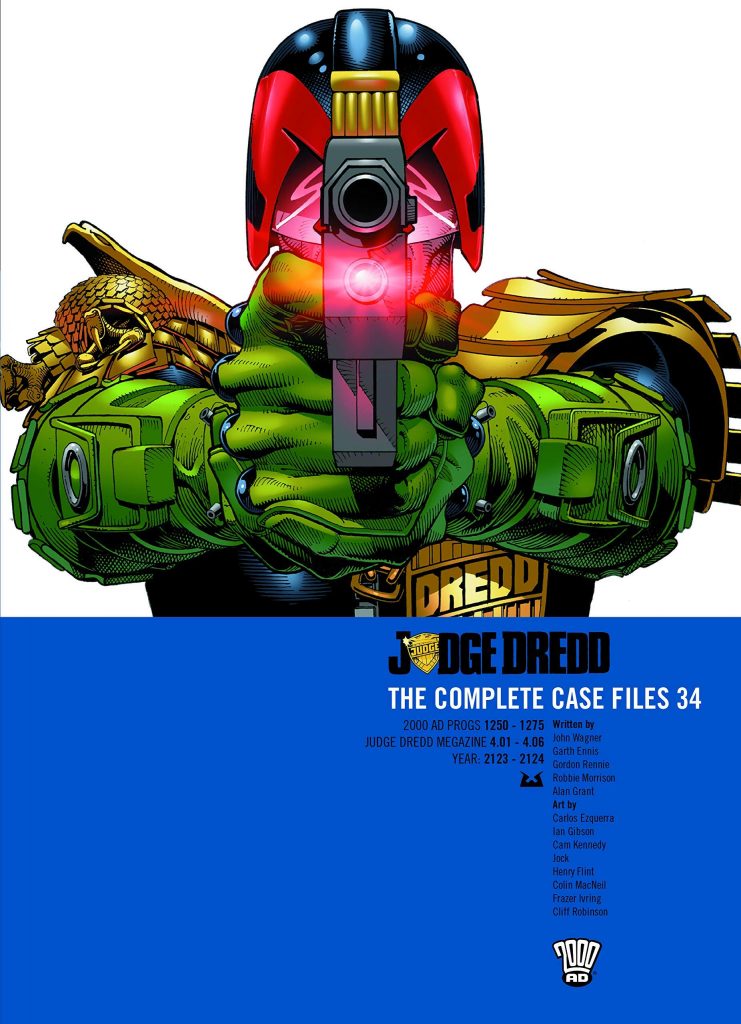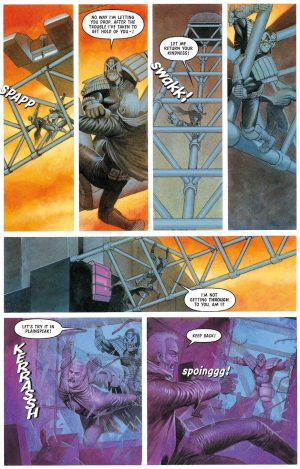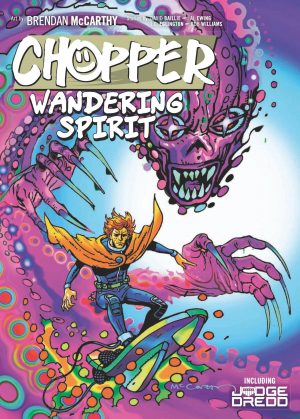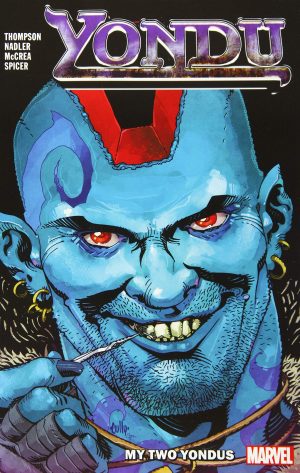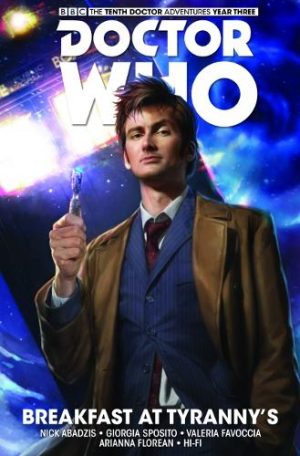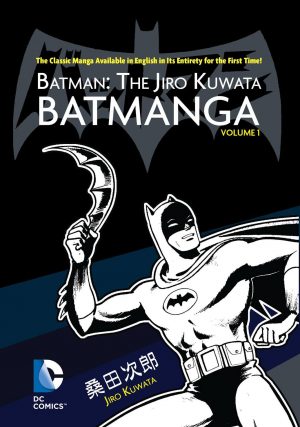Review by Roy Boyd
Complete Case Files 34 has eighteen stories, twelve from 2000 AD and six from the Judge Dredd Megazine. John Wagner writes the most (seven), while Garth Ennis writes just one, but it’s the longest in the book. Gordon Rennie (five), Alan Grant (three) and Robbie Morrison (two), are responsible for the others. With one exception (Ennis, see above) Wagner is the only writer who providing longer tales, with one four-part and two three-part stories. All the rest – that’s fourteen more, we hope you’re keeping up – are one-part tales.
As mentioned above, Ennis’s ‘Helter Skelter’ is the longest story, a twelve-part tale that opens the book with a bang. Dimension-hopping baddies from alternative dimensions gives Ennis the opportunity to feature a rogues’ gallery of villains the likes of which we’ve rarely seen. Judge Death, Fink Angel, War Marshall Kazan, Captain Skank, Murd the Oppressor… the list goes on and on. Not only do we see almost every villain Dredd has ever faced, we also have appearances from other 2000 AD characters, from DR and Quinch to Ace Garp of Ace Trucking Co. The story itself doesn’t really make a lot of sense, something Dredd himself points out, but that’s not really the purpose of the exercise. This is an affectionate trip down Memory Lane that also has something to say about Dredd’s character, and his sense of duty. Carlos Ezquerra provides most art, though he’s well past his best. As if to highlight how tired Ezquerra’s work is by this point, Henry Flint steps in for a short spell, energetically channelling 1980’s Mike McMahon, which he does so well. Ennis’s Dredd is something of an invulnerable superhero, but he does have some absolutely cracking lines.
‘Born Under a Bad Sign’ is a change of pace from the light, jokey tone that predominates in most stories. Instead it’s a genuinely touching tale, written by Robbie Morrison and drawn beautifully by Peter Doherty. Doherty’s work is rarely flashy, but his depiction of Dredd’s world is amongst the most convincing of all the artists that draw the strip.
Two of Alan Grant’s stories feature dope-smoking protagonists, and at least one of these stories would be a better fit for Jim Stewart’s Ganjaman. Are you trying to tell us something, Mr Grant? He actually has written Ganjaman stories, for real.
While the downside of living in a brutal police state is briefly explored, for the most part this is a light-hearted collection. As always, the range of art on offer is impressive. The list does include Cliff Robinson, Jock, Cam Kennedy, Colin MacNeil and Greg Staples.
The Mighty Tharg (alien editor of 2000 AD) doesn’t let anyone who hasn’t proved they can really write near their flagship character. The same is largely true for artists. Sometimes there’s the odd rubbish story or poor artwork, but most of the contributors in this collection have been doing this for years, and are masters of their art. Not many truly outstanding or memorable stories feature, though there are a few, but neither does it contain any stinkers: yet another solid addition to an excellent series.
